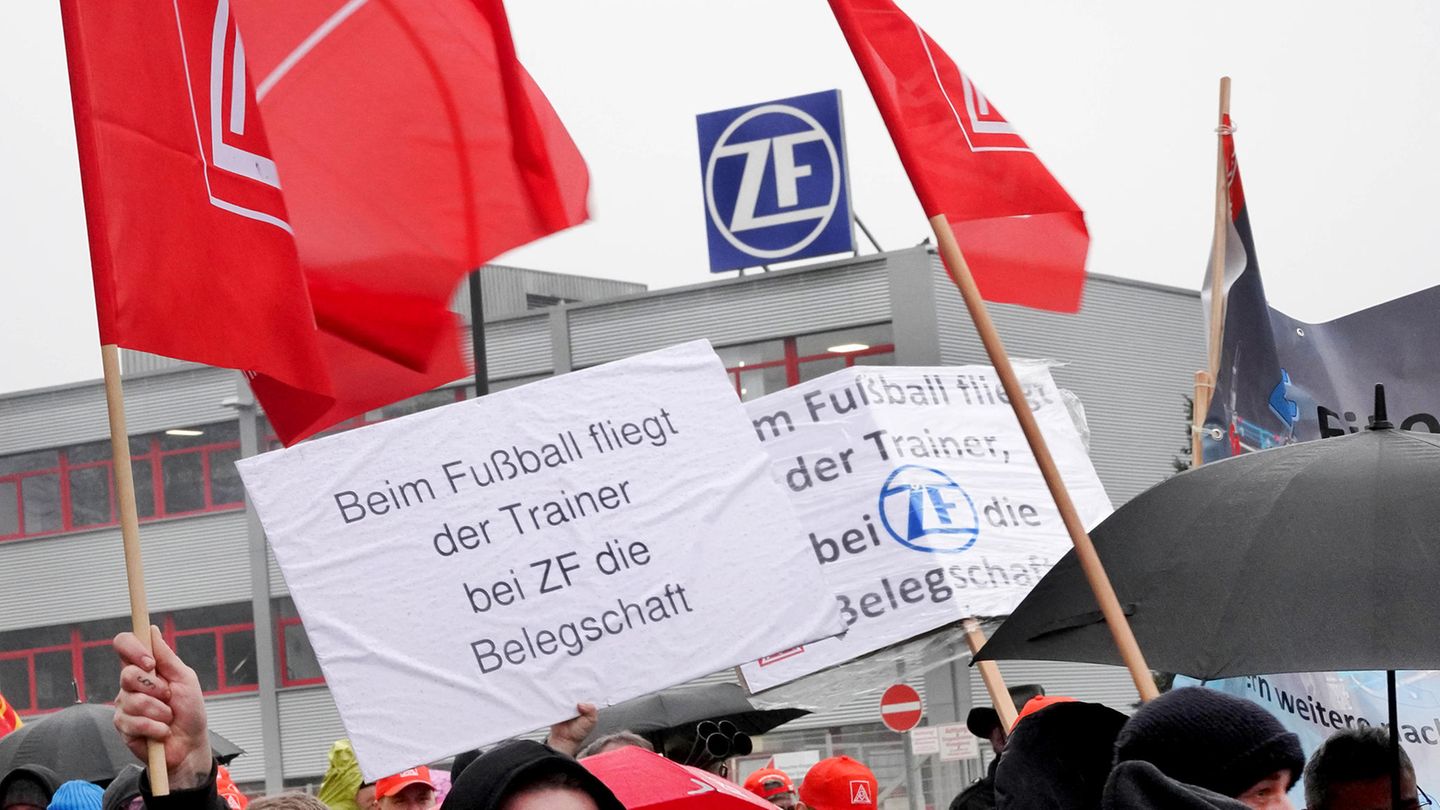Large corporations such as Bayer, SAP and ZF are preparing their employees to cut thousands of jobs. AI and the economy require change, say those at the executive level. This transformation is also an opportunity, says a labor market expert.
They are angry, they are loud: Thousands of employees at the automotive supplier ZF have to fear for their jobs and have therefore been taking to the streets repeatedly for months. The Friedrichshafen-based company wants to cut 12,000 jobs in Germany in the coming years and relocate them to Eastern Europe – for operational reasons, as they say.
A reason that you can also hear from other companies: pharmaceutical giant Bayer wants to cut numerous jobs for operational reasons by the end of 2025 – for the first time in 27 years, and household appliance manufacturer Miele plans to relocate a large part of its washing machine production to Poland. At SAP, the workforce fears further job cuts after 3,000 employees had to leave last year. And even the construction industry, where skilled workers are notoriously scarce, is expecting that 10,000 people could lose their jobs this year.
CEOs are negative about the future
Companies give different reasons for reducing their workforce and the reasons cannot be generalized. In general, many companies are currently in a major phase of change. The fact that they now want to cut jobs is probably also the negative outlook for many CEOs for the next few years. 45 percent of the 4,700 managers surveyed believe that their company will only survive for less than ten years if they stick to the current course. This is an increase of 6 percentage points compared to the survey in 2023.
The solution, according to the CEOs surveyed, is to reinvent their business models. They see generative artificial intelligence (AI) as a possibility for this. By using the technology, they expect a significant increase in the productivity of their employees, which would mean that the same work would have to be done with fewer employees and jobs could be eliminated. Almost a quarter of those surveyed said they wanted to lay off at least 5 percent of their workforce due to AI.
Although AI adoption and strategic integration have been limited so far, CEOs expect greater impact in the future. In the next three years, 70 percent of the managers surveyed believe that technology will significantly change the way companies operate. And 69 percent believe that their workforce will therefore need to learn new skills in order to keep up with this change.
Labor market expert Weber: Layoff levels still “low”
Enzo Weber from the Institute for Labor Market and Occupational Research (IAB) of the Federal Employment Agency explains the recent announcements of downsizing by companies with a current profound transformation of the world of work and a tough economic downturn. Both AI and the restructuring of the economy towards more ecological processes are significantly changing business models, especially in the technical sector, says Weber. A change in jobs is normal in this context. It is important to organize this in a socially acceptable way and, if possible, without layoffs.
The problem lies rather in slow renewal. “While we could talk about the future, we discuss skills shortages, deindustrialization and the ‘sick man of Europe’. But in a transformation you have the chance to advance things that have been stuck for too long.” Economic success requires innovation, investment and qualification, says Weber.
However, the labor market expert does not see a wave of mass layoffs. “Despite everything, the level of layoffs is low,” Weber told Capital. Since last year, slightly more people have been leaving jobs and becoming unemployed, but there are still significantly fewer than in the years from the economic miracle of the 1950s to the beginning of the corona pandemic in 2020.
According to the Federal Statistical Office, the unemployment rate in 2023 was 6.2 percent, which was the fourth lowest level since reunification. According to Weber, this is due to the shortage: “When workers are hard to come by, companies hold on to them.”
This article appeared firstwhich, like stern, is part of RTL Deutschland.
Source: Stern




